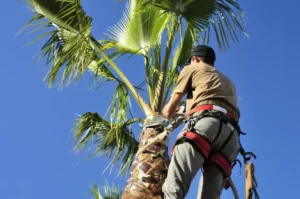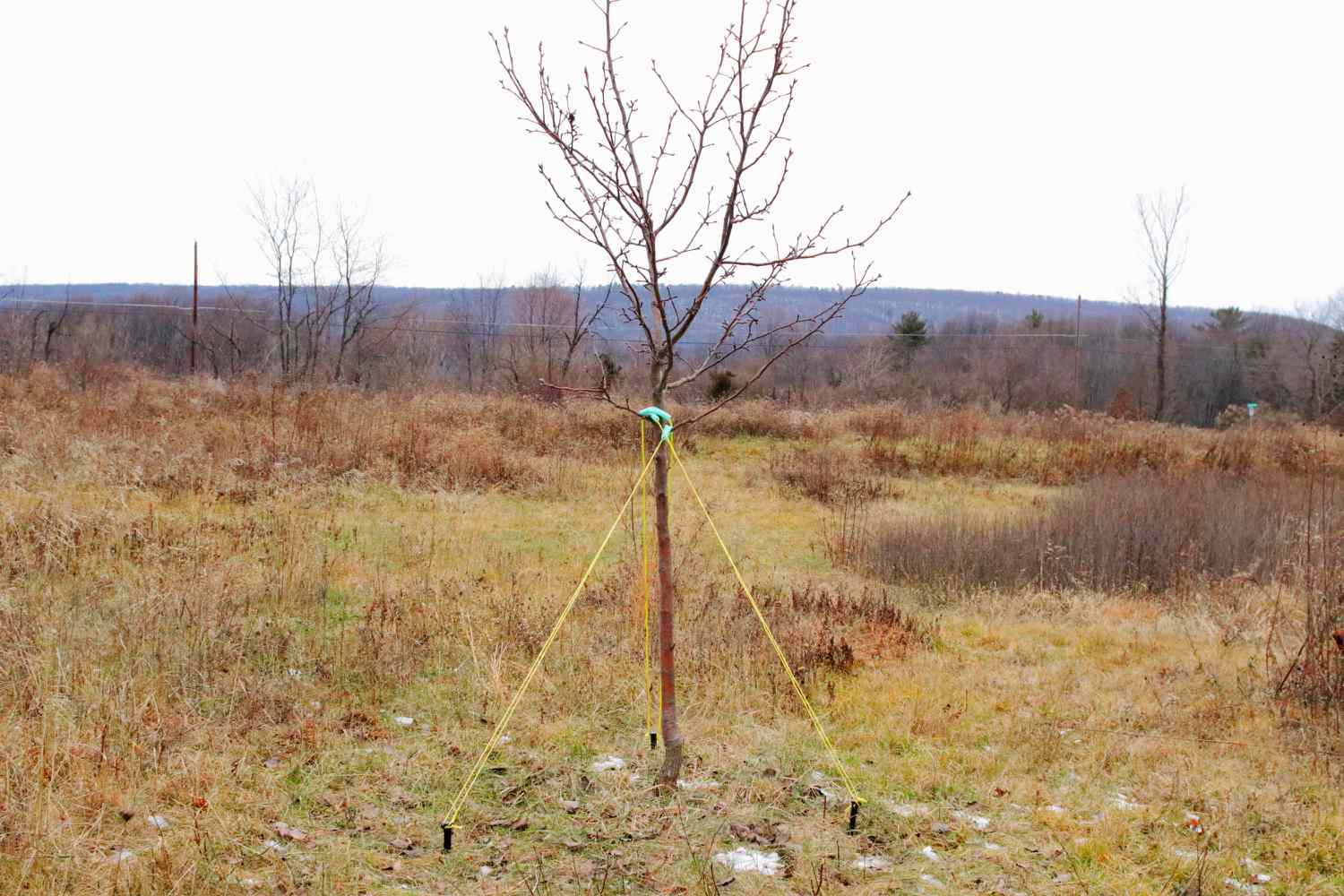Palm Tree Trimming Phoenix is a critical part of proper palm tree maintenance. Over-trimming can leave your palm vulnerable to disease and pests, while under-trimming can lead to an unbalanced appearance.
Start at the bottom of the palm and work your way up, removing dead fronds as you go. Be careful not to remove green fronds, the palm’s food factories!

Palm trees are a beautiful and timeless addition to any home. Regular pruning is essential to keep them looking their best. This can help the tree stay healthy and channel its energy toward new fronds and stems. Using the right tools is also important. These tools can vary depending on the tree size and the type of cuts needed. However, certain basic tools should be used to trim palms.
The first thing that needs to be done is to prepare the tools before making any cuts. This should include cleaning the tools with rubbing alcohol and sanitizing them. This is necessary to prevent the palm from picking up any bacteria or diseases from the tools. This will also make the pruning process safer and more efficient, allowing you to finish more in less time.
Some common tools used in palm tree trimming include shears, loppers, and pruning saws. Pruning shears are ideal for cutting smaller dead fronds and branches. They have sharp blades and are available in a variety of sizes. You can use a pair of loppers with a diameter of up to 2 inches for larger stems. A pole saw is another tool commonly used to trim tall palms. This powerful tool can reach heights of up to 20 feet.
It is also important to avoid over-pruning palms. Removing too many fronds can cause the palm to go into a “deficit mode.” This means that it will not be able to produce enough food for itself. It can also lead to the death of the plant.
Removing loose debris from the tree is also important when pruning a palm. This will help the tree heal faster and prevent pests from laying eggs on the fronds and stems. Removing ropes or ties from the tree after pruning is also a good idea.
While palm trees are easy to care for, it is important to take safety measures when working with them. This includes wearing gloves, eye protection, and a hard hat. Using a ladder when working with tall palms is also a good idea.
Palms can grow quite high, making them easier to trim with proper safety measures. Failure to use safety equipment such as climbing harnesses or ropes can lead to falls and severe injuries. In addition, working with ladders and power tools requires extra precautions to avoid falling debris or electrocution.
Additionally, removing the fronds from palm trees releases spores that can cause itching and rashes, so wearing long sleeves and pants and protecting yourself from these irritants is important. Keeping water nearby is essential in case you get overexerted or lose balance.
Before cutting, sanitize your pruning tools with rubbing alcohol. This will prevent the tree from getting an infection from your trimming tools, much like how a surgeon uses sterile instruments during surgery. Determining which fronds you’ll trim before you start is also a good idea, as this will help you work more efficiently and safely.
Another safety measure when trimming palms is to remove any flowers or fruit that are developing, as these will take energy and nutrients away from the tree and can be a hazard for people walking beneath them. In addition, they can attract pests and lead to further damage if left unattended.
If you’re trimming a palm tree near your home, consider hiring a professional to do the job. They’ll know how to perform safe cuts that will not affect your house or other structures in the area. In addition, they’ll be aware of any local ordinances and can ensure that your project complies with these regulations.
While you can save money by trimming your palm trees, this is a dangerous job for those with little experience or the right tools. It can take a full day to decorate a single palm tree properly, so it’s best to leave this task to the professionals and enjoy your backyard without worrying about your safety.
While DIY palm tree trimming may seem cost-effective, it is best left to professional arborists with the proper training and equipment. This helps ensure the job is done correctly and safely, preventing injury or death. Homeowners should follow safety precautions when trimming palm trees, including wearing protective gear and removing valuable items from the area before starting work. They should also sanitize their tools before cutting, as this will reduce the risk of disease spreading between trees.
First, homeowners should identify dead fronds on the tree and trim them using a pruning saw or loppers. They should be careful not to cut into green fronds, which is necessary for the tree’s health. In addition, it is important not to remove more than 20% of a palm’s fronds at one time, as doing so can cause the tree to become stressed and affect its growth.
It is also a good idea to avoid removing the lower fronds of a palm, as doing so can create a thatched appearance. Another common mistake is over-trimming, which can impact a palm’s health and lead to the tree’s death. Over-trimming also leaves the palm vulnerable to pests and diseases, while under-trimming can affect its appearance.
In addition, it is important not to cut into the trunk of a palm. This can lead to rot and damage to the tree’s roots, which could cause it to die. Additionally, it is important not to use any treatment or sealant on the fronds or trunk after trimming, as these can interfere with the tree’s natural healing process and increase the risk of disease.
Finally, it is important to dispose of any trimmed debris responsibly. Leaving it on the ground can attract insects and other pests and encourage the growth of unwanted plants and vines. It is a good idea to consult with local waste disposal service departments for instructions on properly disposing of palm debris.
Finally, it is important to note that adding soil amendments when planting a palm tree is only sometimes necessary. Some experts believe that adding these additives can hinder the plant’s natural ability to grow. In contrast, others argue that it is important to amend the soil when planting a palm so that it has access to more nutrients and moisture.
Palm tree trimming is dangerous and should only be done by professionals with the right equipment and knowledge. Before beginning, ensure that the area surrounding the palm is cleared of objects that could fall on you or your property when you cut off fronds. It is also best to keep pets and children away from the area so they don’t get injured by falling fronds. Additionally, wearing protective gear while cutting a palm tree is essential so you don’t get hurt. You should also wear long-sleeved clothing and sturdy work boots to protect yourself from sharp blades. Wearing a hard hat and eye protection is also a good idea. In addition, you should check if your local laws permit tree removal and ask for help from professionals if the palm is located in a difficult-to-reach area.
Once you’ve cleared the area, start with the bottom of the tree and then move up. Remember that green fronds are vital for the tree’s health, so only remove brown or dead fronds (except for yellow ones).
When cutting, use a hand saw or pruning shears to avoid damaging other parts of the tree. Be careful not to remove more fronds than the tree can produce in a year, or it may begin to weaken and fail. It’s also important to prune the palm’s trunk to prevent rot and give it a cleaner look.
Finally, be sure to dispose of the discarded fronds properly. They contain needle-like protrusions that can prick those who handle them, so be sure to wear gardening gloves when disposing of them. It’s also a good idea to pick up fallen fruit, flowers, or seeds and store them in a trash bin designed for organic waste.
After finishing your pruning work, treat any wounds with a commercial tree wound dressing and cover them to prevent fungus from infiltrating them. Once the damage has healed, remove any ropes or ties from the tree and reopen pathways for air and light to reach other canopy parts.
